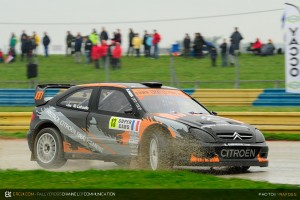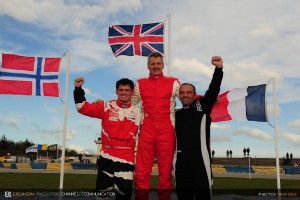Marc Laboulle has “downsized” his 2009 FRC winning Citroën Xsara SuperCar while René Münnich is using a 1400cc engine in his Super1600 Škoda Fabia Mk2. Is this the start of a retrogression trend for the ERC?
There is this old saying in motorsport claiming that the cylinder capacity of a racing engine can only be beaten by – more cylinder capacity. However, for Rallycross it was sometimes necessary to ignore that unwritten rule. In 1987 Seppo Niittymäki won the European championship with a Peugeot 205 Turbo 16 E2 that had a 1775cc engine producing 540bhp. The following year the FIA raised the turbofactor from 1.4 to 1.7 and Matti Alamäki claimed the 1988 ERC title with a similar Peugeot 205, but equipped with an almost 560bhp strong 1760cc engine. While the Pug 205 of his fellow Finn Niittymäki matched the former weight limits to run with no more than 890kg (1775 x 1.4 = 2485cc), Alamäki’s car weighed 960kg (1760 x 1.7 = 2992cc) instead of 1020kg with an engine that would have had just 15cc more capacity. When Alamäki opted to downsizing his arch-rival Martin Schanche prefered the opposite way. Over the following years “Mister Rallycross” tried out different engines with up to over 2300cc capacity to find the best replacement for the Ford RS200 Evo motor. However, as this came with 2137cc and even with a 2350cc mill (2350 x 1.7 = 3995cc) his car would have had to match the weight limit for engines up to 4000cc, it was rather a different situation anyway.
Just two days prior to the French ERC round at Dreux, a press release dropped into the mailbox coming from the stables of 2009 French Rallycross champion Marc Laboulle claiming: “New season, new projects, new technology… We are proud to announce our new 2012 concept, based on a simple idea: reduce the engine size, reduce the weight, and increase the performance.” With not much of information and the attached .pdf also all but helpful it was hard to find out what this was really all about. However, during the Dreux event it was possible to find out more, as well as to witness that the so-called ‘Downsizing Project’ was bearing fruit. At the end of the weekend Laboulle scored an amazing third place overall after an impressive qualification appearance. Even though the car was ready for Dreux at the eleventh hour, in the Timed Pratice the Citroën campaigner was fourth fastest and in the first runs he finished again in fourth place. While the second heat brought only a ninth time in the third runs, the Frenchman was the fastest of all SuperCar drivers, thereby claiming the pole position for the all decisive A final that brought him a podium on home soil.
The Xsara is the car used by Laboulle to win the 2009 French Rallycross Championship. The following year it was driven by French raising star Davy Jeanney who walked in the shoes of his compatriot to claim the 2010 FRC title. Laboulle himself drove a C4 by then and had started to work on a DS3 project. While Jeanney had changed to the C4, the Xsara did not get too much attention from the Mtechnologies squad till they decided to bring the older Citroën model back into Rallycross business in 2012. The downsizing/upgrading programme included the fitting of a smaller motor, a 1.7 litre engine instead of the previous 2.0 litre unit. Thereby it was possible to reduce the car weight from 1300kg to 1210kg (car weighed with driver included), a total of 90kg. Together with the new Oreca engine, most of its ancillaries were replaced with up-to-date parts or optimised. The latest Sadev transmission has been fitted and the Xsara now runs on larger (17 inch) wheels.
While Laboulle was able to present his downsized Citroën Xsara with a big bang in Dreux, German René Münnich has already proved in England and France that his new Škoda Fabia Mk2 with a 1400cc engine is no ‘slowcoach’ among the Super1600 machinery. At Lydden Hill the all-inkl.com principal twice set a sixth fastest time in the first and third qualifying heats as well as a fifth fastest time in the second runs. At Dreux Münnich’s qualification results were less constant, but his second time in the first heats gave the impression that there is more to come from the German internet entrepreneur and his shed Škoda Fabia. The man from Saxony decided to race the Mk2 Fabia with a smaller engine to take advantage of the 1400cc weight limit (860kg), while the 1600cc cars (1000kg) of his opponents need to cary additional 140kg around the Rallycross tracks.
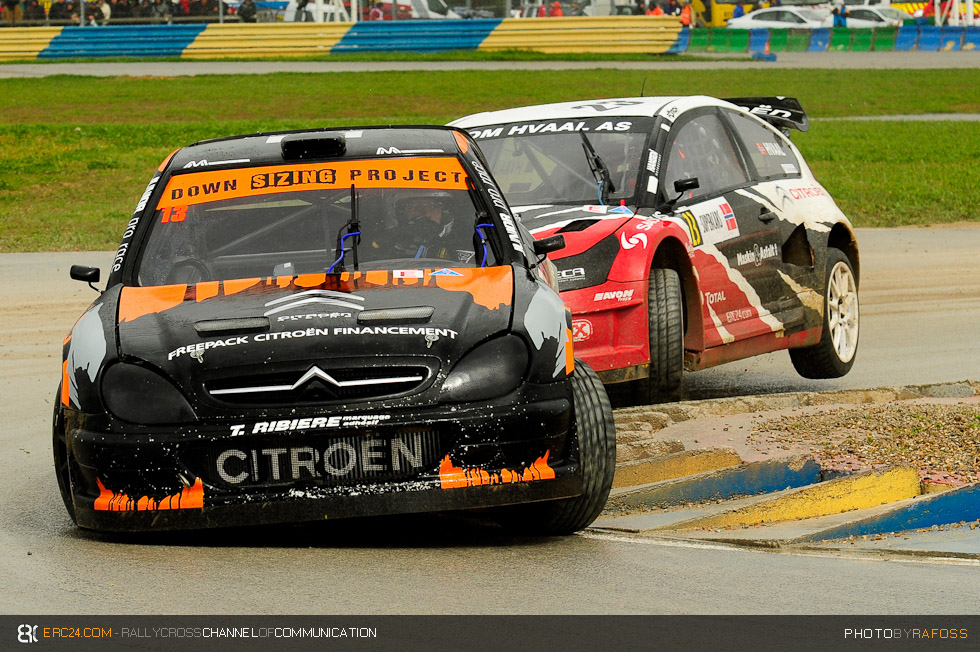
 CCVP Videos – France
CCVP Videos – France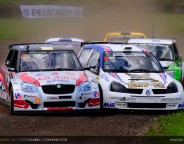 PR: Set Promotion
PR: Set Promotion PR: mrbabyblue
PR: mrbabyblue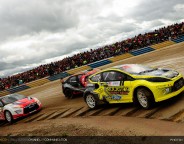 PR: Tanner Foust
PR: Tanner Foust
